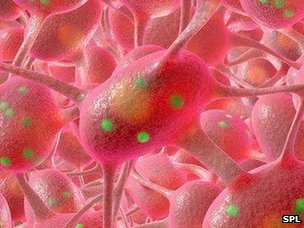The
analysis, published Monday in The Annals of Neurology, used data from an
American military twin registry to examine 99 twin pairs, average age 65, in
which only one sibling had Parkinson’s. A questionnaire was used to establish
the twins’ history of jobs and hobbies that would have exposed them to TCE.
A
twin who had worked with TCE was more than six times as likely to have
Parkinson’s as one who had not, the researchers found. Twins exposed to two
other solvents, perchloroethylene and carbon tetrachloride, substances used in
dry cleaning and other industries, also had a slightly higher risk of developing
Parkinson’s.
The
authors acknowledge that it is difficult to collect accurate information on
exposure retrospectively, that the study is small, and that it is limited to
occupational exposure. Still, the lead author, Dr. Samuel M. Goldman of
the
Parkinson’s Institute, said that almost everyone is exposed to these
substances. “These are common contaminants,” he said. “They are detected in
blood,
breast milk, water and food.”
According to Dr. Goldman and his colleagues, 50 million pounds of TCE are
released annually into the environment in the
BBC Nov. 13, 2011
An international study has linked an industrial solvent to Parkinson's disease.
Researchers found a six-fold increase in the risk of developing Parkinson's in individuals exposed in the workplace to trichloroethylene (TCE).
Although many uses for TCE have been banned around the world, the chemical is still used as a degreasing agent.
The research was based on analysis of 99 pairs of twins selected from US data records.
Parkinson's can result in limb tremors, slowed movement and speech impairment, but the exact cause of the disease is still unknown, and there is no cure.
Research to date suggests a mix of genetic and environmental factors may be responsible. A link has previously been made with pesticide use.
'Significant association'The researchers from institutes in the US, Canada, Germany and Argentina, wanted to examine the impact of solvent exposure - specifically six solvents including TCE.
They looked at 99 sets of twins, one twin with Parkinson's, the other without.
Because twins are genetically very similar or identical and often share certain lifestyle characteristics, twins were thought to provide a better control group, reducing the likelihood of spurious results.
The twins were interviewed to build up a work history and calculate likely exposure to solvents. They were also asked about hobbies.
The findings are presented as the first study to report a "significant association" between TCE exposure and Parkinson's and suggest exposure to the solvent was likely to result in a six-fold increase in the chances of developing the disease.
The study also adjudged exposure to two other solvents, perchloroethylene (PERC) and carbon tetrachloride (CCl4), "tended towards significant risk of developing the disease".
No statistical link was found with the other three solvents examined in the study - toluene, xylene and n-hexane.
"Our study confirms that common environmental contaminants may increase the risk of developing Parkinson's, which has considerable public health implications," said Dr Samuel Goldman of The Parkinson's Institute in Sunnyvale, California, who co-led the study published in the journal Annals of Neurology.
He added: "Our findings, as well as prior case reports, suggest a lag time of up to 40 years between TCE exposure and onset of Parkinson's, providing a critical window of opportunity to potentially slow the disease before clinical symptoms appear."
Water contaminantTCE has been used in paints, glue, carpet cleaners, dry-cleaning solutions and as a degreaser. It has been banned in the food and pharmaceutical industries in most regions of the world since the 1970s, due to concerns over its toxicity.
In 1997, the US authorities banned its use as an anaesthetic, skin disinfectant, grain fumigant and coffee decaffeinating agent, but it is still used as a degreasing agent for metal parts.
 A computer image of affected neurons in the brain of Parkinson's
patients
A computer image of affected neurons in the brain of Parkinson's
patients Groundwater contamination by TCE is widespread, with studies estimating up to 30% of US drinking water supplies are contaminated with TCE. In Europe, it was reclassified in 2001 as a "category 2" carcinogen, although it is still used in industrial applications.
PERC, like TCE, is used as a dry-cleaning agent and degreasing agent, and is found in many household products. CCl4's major historical use was in the manufacture of chlorofluorocarbons for use as refrigerants, but it has also been used a fumigant to kill insects in grain.
Commenting on the paper, Dr Michelle Gardner, Research Development Manager at Parkinson's UK, said: "This is the first study to show that the solvent TCE may be associated with an increased risk of developing Parkinson's.
"It is important to highlight that many of the previous uses of this solvent have been discontinued for safety reasons over 30 years ago and that safety and protection in work places where strong chemicals such as this solvent are used has greatly improved in recent years."
She also called for more research to confirm the link between TCE and other solvents with Parkinson's.
"Further larger-scale studies on populations with more defined exposures are needed to confirm the link," she said.